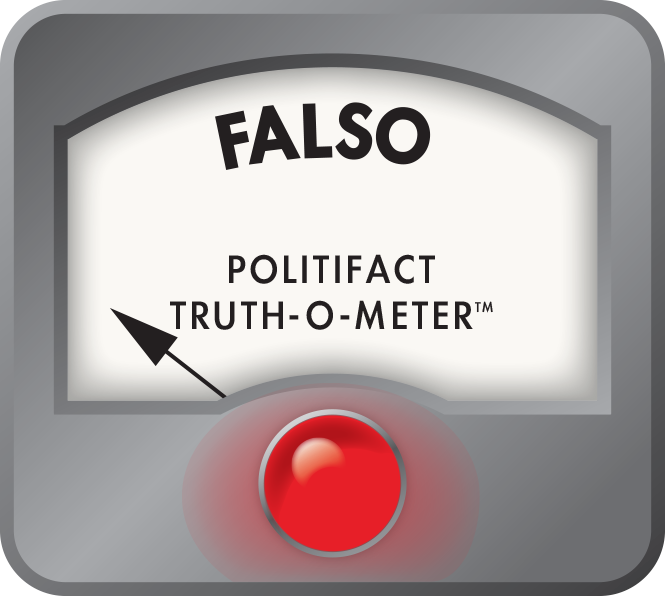Stand up for the facts!
Our only agenda is to publish the truth so you can be an informed participant in democracy.
We need your help.
I would like to contribute
Tim Kaine says Donald Trump's plan would add $30 trillion in debt, tilt toward the wealthy
Sen. Tim Kaine, D-Va., criticized Donald Trump’s fiscal proposals during his debut convention speech as the Democratic vice presidential nominee.
Independent analysts, Kaine said, "found Trump's tax plan, given to the wealthy and big corporations, would rack up $30 trillion in debt."
We’ll take a look at this statement in two parts.
Trump ‘would rack up $30 trillion in debt’
As we have previously reported, this figure originated in an analysis from the Urban Institute-Brookings Institution Tax Policy Center, a nonpartisan group that, among other things, regularly analyzes the broader economic effects of presidential candidates’ tax proposals.
In its report, the center found that "including interest costs, the proposal would add $11.2 trillion to the national debt by 2026 and $34.1 trillion by 2036." This estimate assumes no major spending cuts would be made, which tracks with the historical pattern, the authors said. The Clinton campaign also noted that Trump has not specified any cuts to offset his plan.
So Kaine has a point that the $30 trillion-plus figure has been used by an independent organization. Still, it’s worth noting a couple caveats.
• That analysis uses a 20-year time frame. When groups like the Tax Policy Center analyze the budgetary impact of policy proposals, they typically use a fixed "window" of time to measure the effects. Usually, it’s a 10-year window. In this case, the center offered both a 10-year window and a somewhat more unconventional 20-year window.
Over 10 years, the center projected, Trump’s policies would increase the debt by $11.2 trillion. Over 20 years, they would increase the debt by $34.1 trillion.
So Kaine, like Clinton before him, cherry-picked the biggest number for his talking point — a figure that was three times as big, and which used an unconventional window of time.
Featured Fact-check
• Kaine overlooked a study with a smaller projected debt increase. Another study of Trump’s policies, by the economic forecasting firm Moody’s, offered three scenarios, depending on whether one takes Trump’s policy proposals at face value, whether he enacts them with some compromises, or whether he ends up unable to enact much of his agenda. All the scenarios look at the impact of the resulting policies over 10 years.
The first scenario produces additional debt of $9.7 trillion above current policies. The second produces a debt increase of $6.9 trillion above current policies. And the last produces a debt increase of less than $1 trillion above current policies. That final scenario is about 3 percent of the amount Kaine cited in the speech.
‘Given to the wealthy and big corporations’
The benefits of Trump’s plan skew toward the top of the income heap, independent experts have concluded.
As we have noted, Trump’s proposal would consolidate the existing seven income brackets (with rates from 10 to 39.6 percent) into three with rates at 10, 20 and 25 percent. He would also increase the standard deduction from $6,300 to $25,000 for single filers and from $12,600 to $50,000 for joint filers and phase out most itemized deductions, except for charitable giving and mortgage interest. And he would eliminate the estate tax, the alternative minimum tax, the Affordable Care Act taxes, and the marriage penalty.
Meanwhile, Trump’s reforms to the corporate tax code would collapse the eight tax brackets ranging from 15 to 35 percent into a flat rate of 15 percent and to tax the foreign income of U.S. companies abroad.
While virtually everyone would pay less under the Trump plan, it offers particularly big benefits to the richest taxpayers.
The Tax Policy Center calculated that the average tax cuts for the top 1 percent would be $275,000, or 17.5 percent of after-tax income, and for the top 0.1 percent, they would be $1.3 million, or nearly 19 percent of after-tax income.
Middle-income households, meanwhile, would get a cut of $2,700, or a 4.9 percent reduction. Those making the least would see a cut, too, but only of $128 or so, working out to roughly 1 percent of after-tax income.
Our ruling
Kaine said that independent analysts "found Trump's tax plan, given to the wealthy and big corporations, would rack up $30 trillion in debt." Kaine is on pretty solid ground with the substance of his assertion, but he’s cherry-picked the biggest figure of several that were available. We rate his statement Half True.
https://www.sharethefacts.co/share/af5240d2-cf7d-4c5e-8113-85fdc243c665Our Sources
Tim Kaine, remarks at the Democratic National Convention in Philadelphia, July 27, 2016
PolitiFact, "Hillary Clinton says that, according to analysts, Donald Trump would increase debt by $30 trillion," July 13, 2016
PolitiFact, "Donald Trump says he had the biggest tax cuts of any 2016 candidate," July 21, 2016
PolitiFact, "PolitiFact's guide to the 2016 presidential candidate tax plans," April 7, 2016
Browse the Truth-O-Meter
More by Louis Jacobson
Tim Kaine says Donald Trump's plan would add $30 trillion in debt, tilt toward the wealthy
Support independent fact-checking.
Become a member!
In a world of wild talk and fake news, help us stand up for the facts.














































